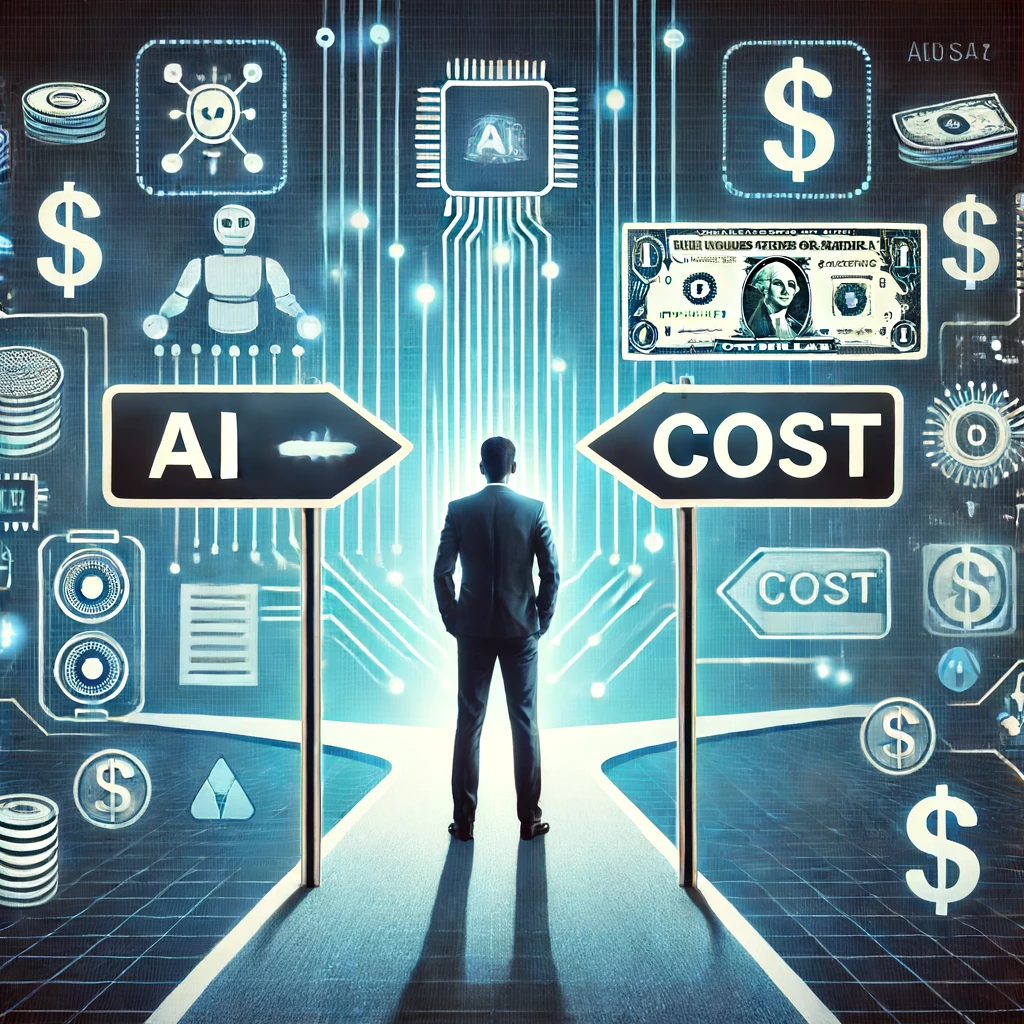In the rapidly evolving landscape of technology, Artificial Intelligence (AI) has emerged as a game-changer across various sectors. From healthcare and finance to entertainment and daily productivity, AI is transforming how we live and work. However, as AI’s capabilities grow, so do the costs associated with developing, maintaining, and utilizing these sophisticated systems. This brings us to a pressing question: Are you ready to pay for AI?
The Rising Costs of AI
AI technology, particularly the most advanced forms like deep learning and natural language processing, requires substantial investment. These costs come in multiple forms:
- Research and Development (R&D): Creating state-of-the-art AI models demands significant investment in R&D. This includes hiring top-tier talent, acquiring cutting-edge hardware, and funding continuous experimentation. Learn more about AI investment trends.
- Computing Power: AI models, especially those involving deep learning, need vast amounts of computing power. High-performance GPUs and cloud computing services can quickly become expensive, especially as models scale. Explore the impact of GPU shortages on AI costs.
- Data: High-quality, large-scale datasets are crucial for training effective AI models. Acquiring and curating these datasets often involves costs related to data collection, cleaning, and annotation. Read about the importance of data in AI development.
- Maintenance and Updates: AI systems require ongoing maintenance to ensure they remain effective and secure. This includes regular updates, bug fixes, and improvements based on user feedback and new research findings. See how AI maintenance strategies are evolving.
- Ethical and Regulatory Compliance: Ensuring that AI systems operate ethically and comply with regulatory standards is increasingly important. This can involve costs related to legal advice, audits, and implementing fairness and transparency measures. Understand the ethical considerations in AI.
The Value Proposition
Despite the high costs, the value proposition of AI is compelling. Here are a few reasons why paying for AI can be a worthwhile investment:
- Efficiency and Productivity: AI can automate routine tasks, analyze vast amounts of data quickly, and make predictions with high accuracy. This can lead to significant efficiency gains and productivity boosts across various industries. Discover how AI boosts productivity.
- Innovation and Competitive Advantage: Companies leveraging AI can innovate faster and gain a competitive edge. Whether it’s through personalized customer experiences, predictive analytics, or smart automation, AI opens up new opportunities for differentiation. Learn about AI-driven innovations.
- Scalability: AI can handle tasks at a scale and speed that human workers cannot match. For businesses looking to scale their operations, AI offers a path to growth without proportionally increasing labor costs. See how businesses are scaling with AI.
- Improved Decision-Making: AI systems can provide insights and recommendations based on data analysis that can improve decision-making processes. This is particularly valuable in fields like finance, healthcare, and logistics, where data-driven decisions are crucial. Improve decision-making with AI.

Are Consumers Ready to Pay?
While businesses are increasingly recognizing the value of investing in AI, the question remains whether consumers are ready to pay for AI-driven products and services. Here are a few considerations:
- Perceived Value: Consumers are more likely to pay for AI if they perceive clear, tangible benefits. This could be in the form of improved service quality, personalized experiences, or time savings. See how AI enhances customer experiences.
- Trust and Transparency: Trust in AI systems is crucial. Consumers need to feel confident that AI is being used responsibly, with respect for privacy and ethical considerations. Transparency about how AI systems work and how data is used can help build this trust. Read our transparency policy.
- Cost-Benefit Analysis: For many consumers, the decision to pay for AI will come down to a cost-benefit analysis. If the benefits outweigh the costs, they are more likely to invest. This means pricing strategies need to align with the perceived value of the AI offerings. Understand our pricing strategy.
- Accessibility and Usability: AI-driven products and services must be accessible and easy to use. If the technology is too complex or difficult to use, consumers may be reluctant to pay for it. Explore our user-friendly AI solutions.
The Future of AI Monetization
As AI technology continues to advance, new monetization models are likely to emerge. Here are a few potential trends:
- Subscription Models: Similar to how many software services operate, AI offerings could adopt subscription models, providing continuous access to AI-powered features and updates. Subscribe to our AI services.
- Freemium Models: Basic AI services could be offered for free, with premium features available for a fee. This approach can help attract a broad user base while monetizing more advanced capabilities. Learn about our freemium AI model.
- Usage-Based Pricing: Charging based on usage can be an effective way to monetize AI, especially for services that involve significant computational resources. This model ensures that users pay in proportion to the value they derive. Explore our usage-based pricing.
- Partnerships and Ecosystems: Collaborations between AI providers and other companies can create new revenue streams. For example, integrating AI capabilities into existing platforms or products can enhance value and drive monetization. See our AI partnerships.
Conclusion
The question of whether you are ready to pay for AI is multifaceted, involving considerations of cost, value, trust, and usability. As AI technology continues to evolve, it will be crucial for both providers and consumers to navigate these complexities thoughtfully. For businesses, investing in AI can unlock significant opportunities for innovation and efficiency. For consumers, the decision to pay for AI will hinge on the perceived benefits and trust in the technology. Ultimately, the future of AI monetization will depend on striking the right balance between cost and value, ensuring that AI-driven products and services deliver tangible benefits that justify the investment.



